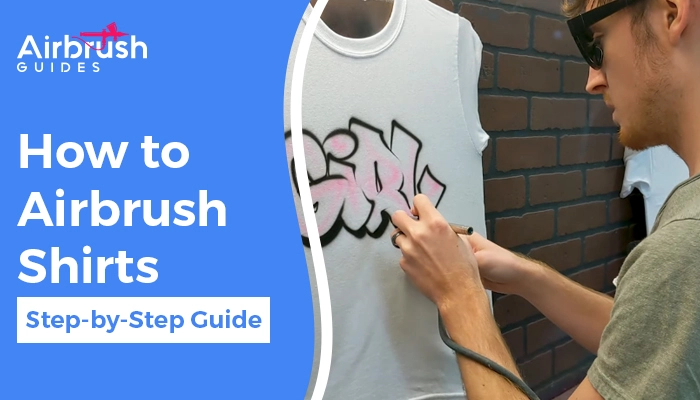How to Airbrush Fine Lines: Tips & Techniques for Achieving Best Results
Airbrushing is a popular technique used in various forms of art, including illustration, automotive painting, and makeup application. One of the most challenging aspects of airbrushing is creating fine lines, which require precision, patience, and a steady hand. In this article, I’ll provide tips and techniques for how to airbrush fine lines, including equipment recommendations, paint selection, and proper technique for thos who
Whether you’re a seasoned airbrush artist or just starting, these tips will help you create smooth, detailed lines that are sure to impress. From choosing the right airbrush and paint to practicing patience and keeping your equipment clean, we’ll cover everything you need to know to master the art of airbrushing fine lines. So, grab your airbrush and let’s get started!
How to Airbrush Fine Lines: 9 Most Effective Tips
Airbrushing is a fun activity that you do as a hobby or you can make a profession out of it. Learning to perfect airbrushing takes time just like any other skill. Below I’ve mentioned 9 most effective tips that can be used to master the skill of airbrushing fine lines.
Tip #1: Use the Right Equipment
The equipment you use can make a big difference in the quality of your airbrushed fine lines. Make sure you’re using a high-quality airbrush that’s designed for fine detail work. Look for an airbrush with a small nozzle size, which will allow you to achieve precise lines. You may also want to invest in a compressor with a regulator that allows you to adjust the air pressure to achieve the desired effect.
Tip #2: Practice on a Test Surface
Before you start airbrushing on your final surface, it’s a good idea to practice on a test surface. This will allow you to experiment with different techniques and get a feel for how the paint flows through the airbrush. You can use a piece of paper or cardboard as your test surface.
Tip #3: Thin Your Paint
Thinning your paint is essential when airbrushing fine lines. Paint that’s too thick can clog the airbrush nozzle, making it difficult to achieve smooth lines. You’ll want to thin your paint with a compatible thinner until it has a consistency similar to milk. You can test the consistency by spraying a small amount of paint onto your test surface.
Tip #4: Hold the Airbrush Correctly
Holding the airbrush correctly is important when airbrushing fine lines. Hold the airbrush like a pencil, with your index finger on the trigger and your other fingers supporting the airbrush. Keep your wrist steady and move your arm to create the line.
Tip #5: Use a Stencil
If you’re struggling to create a straight line, consider using a stencil. Stencils can be purchased or made from paper or plastic. Hold the stencil against your surface and spray the paint over it. Be sure to hold the stencil in place to prevent any bleeding under the edges.
Tip #6: Use the Right Paint
Choosing the right paint is crucial when airbrushing fine lines. Water-based paints like acrylics or gouache are the most popular choices for airbrushing because they can be easily thinned and cleaned up with water. Oil-based paints are more difficult to work with and require solvents for thinning and cleanup.
Tip #7: Use the Proper Technique
There are several techniques you can use when airbrushing fine lines, depending on the effect you want to achieve. For example, you can use a straight pass technique, where you move the airbrush in a straight line to create a clean, precise line. Or, you can use a feathering technique, where you spray the paint in short bursts to create a softer, more natural-looking line. Experiment with different techniques to find the one that works best for you.
Tip #8: Practice Patience
Creating fine lines with an airbrush takes time and patience. Don’t rush the process or try to create the perfect line in one pass. Instead, build up the line gradually, adding layers of paint until you achieve the desired effect. This will help prevent mistakes and ensure a clean, smooth result.
Tip #9: Keep Your Airbrush Clean
Keeping your airbrush clean is essential when airbrushing fine lines. Paint buildup can clog the nozzle and cause the paint to spatter, ruining your fine lines. Make sure to clean your airbrush thoroughly after each use and use a cleaning solution to remove any buildup.
Frequently Asked Questions
Q: How do I clean my airbrush after use?
Cleaning your airbrush is essential to keep it functioning properly. First, disassemble the airbrush and rinse it with water. Then, use a cleaning solution designed for airbrushes to clean the nozzle and other parts. Finally, rinse everything thoroughly with water and let it dry completely.
Q: Can I airbrush fine lines with acrylic paint?
Yes, you can airbrush fine lines with acrylic paint. Just be sure to thin the paint properly and use an airbrush designed for fine detail work.
Q: Can I airbrush fine lines on fabric?
Yes, you can airbrush fine lines on fabric. Just be sure to choose a fabric paint that’s compatible with your airbrush and follow the manufacturer’s instructions for thinning the paint.
To Conclude
Airbrushing fine lines can be challenging, but with the right equipment, techniques, and practice, you can achieve smooth, detailed results. Remember to use the right equipment, practice on a test surface, thin your paint, hold the airbrush correctly, and consider using a stencil if needed. With these tips and techniques, you’ll be well on your way to airbrushing fine lines like a pro!






